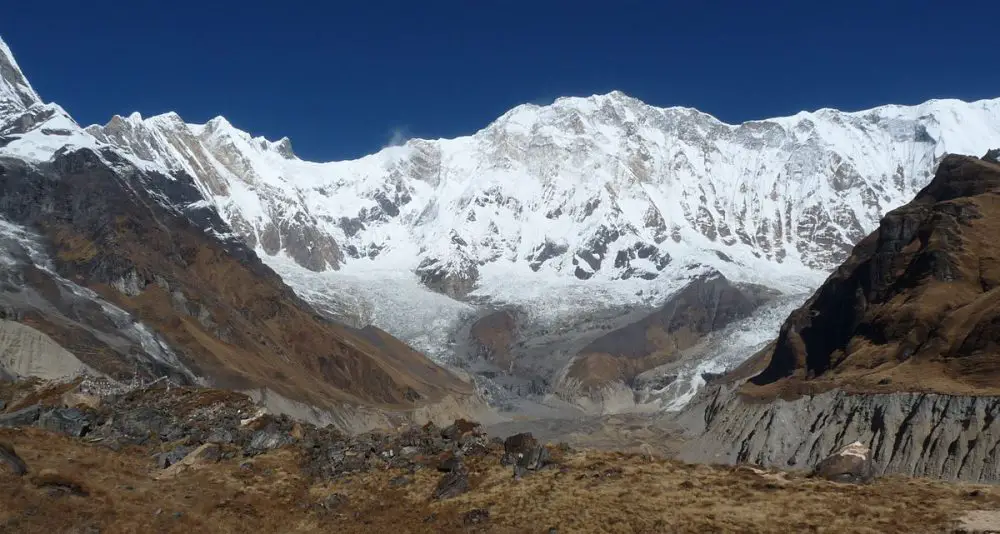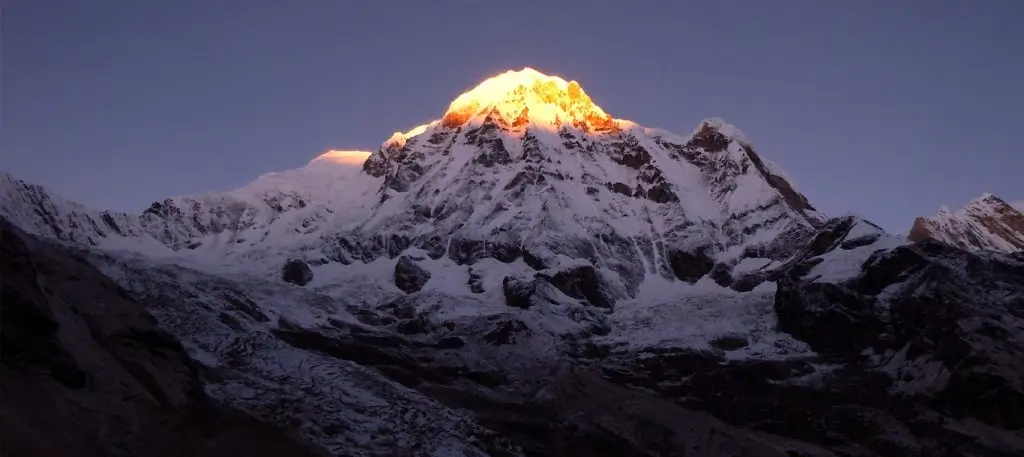Why Is Annapurna So Dangerous?

Annapurna is one of the tallest mountains in Nepal, standing at a height of 8,091 meters above sea level. Mount Annapurna is not just the tallest but also the most dangerous mountain in the world. The peak is famous for its brutality, and the expeditions tend to stop in the area as winter approaches. This mountain is located in Gandaki Province, north-central Nepal. The cold weather in the area and the unbearably body-numbing chills you will get in the mountain will leave you short of words.
There have been a lot of things yet unknown to anyone who has not yet expedited Mount Annapurna to this day. You will definitely be in for a thrill and know why is Annapurna so dangerous if you read this article till the end.
Why is Annapurna so Dangerous?

Why is Annapurna so dangerous for just anyone to climb? Even the most experienced mountaineer might have difficulty expediting this peak for various reasons. One of the triggers mountaineers tend to have when climbing Annapurna is facing a knee-high snow length while trying to make it to the top. This makes it harder for them not just to ascend but also to walk up to the top of the peak simply. If you don’t forecast the weather, you are in for a big dangerous ride up the mountain because there is a big probability of snowstorms and icefall in Annapurna. You never know what is waiting for you up in the mountains.
Hence, it is always suggested to be more cautious than regretful later. One of the reasons why people meet with accidents in Annapurna is they underestimate the unseasonal snowstorms and dangers. But, what one must keep in mind is the changing humidity due to seasonal changes really does not do much to the unexpected dangers that come your way when you are in this mountain.
Moreover, trekkers have to keep in mind the death zone in Annapurna. If you do not speed up during your time in this zone, then there is a great probability that you will suffer. Therefore, do not take any risks while you’re in Annapurna, and walk faster in the death zone.
Is it possible to climb Annapurna during winter?

While many mountaineers may have attempted to climb Annapurna even during winter, it is not quite safe for them to do so. Winter expeditions in Annapurna can be very dangerous! Mount Everest is comparatively easier to ascend, even the tallest mountain in the world than climbing Mount Annapurna. It is, without a doubt, the deadliest mountain in existence. Furthermore, the mountain has been facing a big decrease in the number of people who travel to it during winter because of the increasing awareness about Mount Annapurna’s dangers and unstable conditions.
While the best time to climb the mountain is spring or autumn, the worst time is either the monsoon season or winter. Trekking to Annapurna can take about two months, but in winter, the time frame stretches to an extent where you will find it more difficult to cover the whole trek in just two months. Summiting the mountain is not the easiest!
Even during the winter, you will likely start your Journey from Pokhara to Tikhedhunga. A walk to Ghorepani and Poon Hill will not tire you in any way whatsoever if you are an experienced trekker; for anyone who is not as experienced, even the initial (and easier) trails may not be the simplest to cover. However, the easier trail ends and becomes more challenging as one heads towards Lete and Thulo Bugin Campsite.
Along the way, you will experience one of the best views in Nepal, with green landscapes, mountainous views, and the beauty of rural livelihood in the areas. Going upwards from Mirsti Khola to the North Base camp will take a lot of effort and raise your difficulty as the altitude increases. Make sure you save a good amount of energy when you are here, you are going to need a lot of physical strength for this!
Overall, the summit will take a long time, and you have to take along some trustworthy Sherpas and porters who can help you lodge, provide food, and get the physical and knowledgeable support you will need while you are at Annapurna.
What makes Annapurna trekking so difficult?

There are several reasons as to why Annapurna trekking can be so difficult. Some of the following will help you in knowing more;
1. Altitude sickness
Annapurna is one of the tallest mountains not only in Nepal but also in the world. It stands tall, above 8000 meters, and this is no joke to anyone who wants to summit the peak. Your trail is easier in the beginning. Hence, you will not face any difficulty when you are in the lower trekking areas. However, as you go higher, there is a great possibility of you suffering from high-altitude pulmonary edema and cerebral edema.
One of the main things to remember is that the temperature is likely to go below sub-zero, leading you to suffer more from altitude sickness. Hence, it becomes crucial for you to carry along some oxygen cylinders and medications, along with some extras, as help for your guides.
2. Steep Trail
The trail of Annapurna gets steeper as you go upwards. It is not simple for just anyone to experience a convenient trail while they are in Annapurna. One has to face altitude changes, extreme temperature and oxygen drops, and a very steep road uphill. Going upwards becomes difficult, increasing the possibility of falling from the ice walls, icefalls, and snowstorms.
3. Bad weather and drop in temperature
As the trekkers go upwards, it is likely for them to face bad weather conditions as well as a drop in temperature. The low temperature is why travelers fail to go any further. When this happens, they either are forced to return or suffer in the extremely low temperature, which goes below zero as you ascend. Likewise, the weather resulting from snowstorms, extremely cold conditions, and unfortunate events that follow due to the extremely icy and bad weather can be why it is hard for a mountaineer to withstand the temperature and weather in Annapurna.
The temperature is worse in winter as it drops below -20 degrees Celsius. The bitterness of the mountain cannot protect with thin yet multiple layers of clothing. Instead, you must opt for something that will give you extra protection from the cold even as the height exceeds, and there is nothing more important than carrying extra clothes. These clothes will protect you to stay warmer, so make sure you take along a porter who will carry your clothes.
4. Finding guides and porters in Annapurna

It is not easy to find guides and porters in Annapurna. Even when you find a guide or a porter, you might have difficulty familiarizing yourself with them. A lot of Nepalese locals who are willing to guide you up to the summit are not really as educated in other languages besides Nepali. Hence, one of the most important things to remember before you submit to Annapurna is to find guides and porters who know how to speak English fluently. The language barrier is one of the major reasons why it is not easy to find guides and porters while expediting to Annapurna.
Moreover, you have to come to terms with good pay for the guides who are professional as well as knowledgeable. Likewise, if any local is willing to help, you cannot trust just anyone to take you to one of the most dangerous peaks in the world. Therefore, it is important that you are careful along the way!
5. Planning for the 2 months long trek
Anyone trekking to Annapurna cannot rely on their physical capabilities without good training. You have to train yourself well enough to become confident in making possibly the most legendary expedition of your life. If you do not train, you are likely to fail badly. Hence, take at least a few months of training, and train in mountains closer to you and shorter in height. You have to train not just for walks but also acclimatization.
6. Icefalls and avalanches
Once you are in Annapurna, avalanches and icefalls are unavoidable. Hence, this is one of the biggest challenges and reasons Annapurna is dangerous, with such high death rates!
Also, read:
